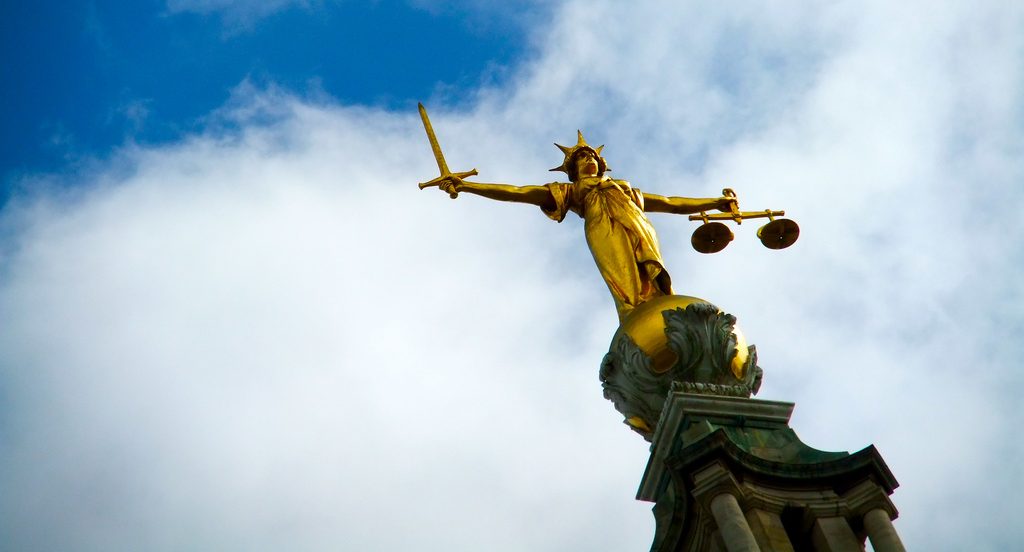The government recently announced proposals to extend hate crime to cover hostility towards women, men and the elderly. But has the legal recognition of ‘hate’ actually helped to address prejudice and victim’s rights?
The concept of hate crime is a relatively new development in criminal law and it’s evolving, thanks to the efforts of social movements and legislators to include more identities and characteristics.
Hate Crime In England And Wales
Hate crime provisions within England and Wales law mean that where victims of a crime are targeted because of a perceived or actual identity, such as race or religion, convicted perpetrators can receive harsher penalties and prison sentences than non-hate motivated offenders.
There are also specific criminal offences that have higher penalties such as racially and religiously aggravated offences.
However, there is plenty of debate about how hate crime and hate incidents should be defined.
In England and Wales, the interpretation taken by police when reporting an incident is pretty broad: “A hate incident is any incident which the victim, or anyone else, thinks is based on someone’s prejudice towards them because of their race, religion, sexual orientation, disability or because they are transgender”.
This means hate crime reporting is largely based on perception, and from a victim-centred point of view.
Between 2015 and 2018, the Crime Survey for England and Wales estimates that there were around 184,000 incidents of hate crime a year. The most commonly reported motivating factor in these hate crime incidents was race, although there have been increases in the number of religiously motivated incidents.
Part of the overall increase of reported hate crime incidents is due to improvements in crime reporting by the police, but there are sometimes spikes following certain events, such as political changes and terrorist attacks.
How do Hate Crimes play out in practice?
 Credit: Flickr James Cridland
Credit: Flickr James Cridland
Despite the large number of incidents reported, relatively few actually result in successful prosecutions for a hate crime offence. There also seems to be an under-reporting and under-recording amongst more vulnerable or underrepresented groups.
For example, research with Muslim communities show some victims are hesitant to report incidents to the police, particularly if it involves someone known to the victim such as a neighbour.
A recent report on misogyny hate crime indicated that as with many hate incidents, non-reporting can be common, and as with offences including rape and sexual assault, victims can decide not to pursue the matter with the police for a variety of reasons, including concern that they will not be believed and /or taken seriously.
One reason for the low number of prosecutions is the way hate crime needs to be proven in court; in practice, it can be very difficult for the prosecution to prove the offender was motivated by hate for a particular identity, or that it was clearly demonstrated during the course of the criminal offence.
A report analysing Crown Prosecution Service data said that there is a ‘justice gap’ in hate crime; they pointed to the approximately 110,160 reported hate crimes in 2015-16, of which only 4% resulted in a sentence uplift based on a ‘hate’ element.
Prosecution is not necessarily always the best outcome for these types of offences. Some research and interviews with victims of hate crime show that victims can be in greater support of restorative justice rather than enhanced penalties as a response to hate crime.
Restorative justice can take many forms, but one way it could be applied in the context of hate crime is the victim has a chance to directly tell the offender how their criminal behaviour has affected them and to ask them questions.
It also gives the offender a chance to make up for it in some way and work to change their behaviour.
Should Misogyny Be Classed As A Hate Crime?
![By Rwendland [CC BY-SA 4.0 (https://creativecommons.org/licenses/by-sa/4.0)], from Wikimedia Commons](https://rightsinfo.org/app/uploads/2018/10/1024px-Stella_Creasy_2016_Labour_Party_Conference_3_cropped.jpg) Stella Creasy MP Credit: Wikimedia Commons
Stella Creasy MP Credit: Wikimedia Commons
The experiences of women who feel targeted and harassed because of their gender is a problem, with 85 per cent of young women having experienced sexual harassment in public places.
If women are planning their lives around not being harassed or assaulted, they are not free
Sarah Green, End Violence Against Women
Research in 2016 revealed that 63 per cent of women felt unsafe in public places, with many making decisions to avoid travelling on public transport and altering their routes home.
Sarah Green of the End Violence Against Women Coalition has said “if women are planning their lives around not being harassed or assaulted, they are not free”.
Following a pilot project in Nottingham where the police recorded street harassment in the same way they record other forms of hate crime, MP Stella Creasy submitted an amendment to the “upskirting” bill that would include misogyny as an aggravating factor in England and Wales.
Categorising misogyny as a hate crime won’t end street harassment and crimes experienced by women
Categorising misogyny as a hate crime won’t end street harassment and crimes experienced by women.
However, proponents of this change, including Stella Creasy MP, argue that recording misogyny as a hate crime can change social attitudes and challenge social acceptance of misogyny.
These proposals are fundamentally about freedom
Stella Creasy MP
She said “We should never disrespect men by somehow suggesting that they are incapable of controlling their behaviour. At their heart, these proposals are fundamentally about freedom – the freedom for women to be able to use the spaces and places in our society just as equally as men do.”
So how useful are Hate Crime laws?
 Credit: Flickr MGifford
Credit: Flickr MGifford
The value of hate crime laws, arguably lie not so much in the quality of protection they offer to minority groups, but rather in the symbolic disapproval of hate and prejudice it provides. By criminalising forms of prejudice, you can reflect a broader sense amongst communities that society is saying ‘this is not ok’.
But is this symbolism helpful or effective in addressing the root causes of prejudice and animosity towards people of particular identities? There are many ways in which that could be judged, but as a new phenomenon in the law, the long-term effects are yet to be determined.
Critics argue the inclusion of different identities as part of hate crime laws, are dangerous because they divide rather than unite society against prejudice and encourage people to think of themselves as members of an identity group.
However, by including misogyny as a hate crime, as well as using other tools to tackle forms of prejudice, we can challenge the underlying hate that targets victims based on something that is such a core component of who they are.







